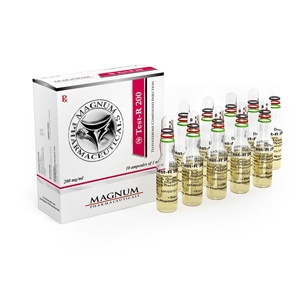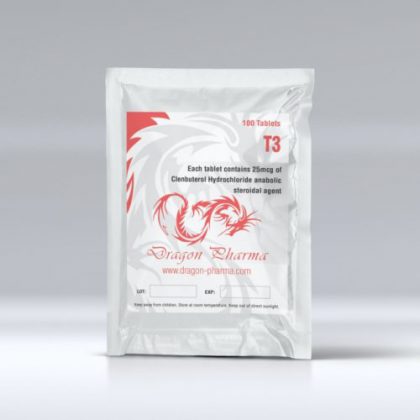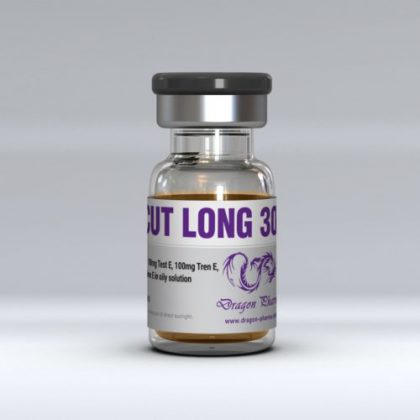- Carrello vuoto.
- Continua a fare acquisti
La verità sul diidrotestosterone

Spesso le persone si rivolgono a me con domande sul diidrotestosterone (DHT) e sui suoi derivati. Sembra che le persone abbiano un'idea sbagliata del suo lavoro, chiamando DHT una sorta di diabolico sottoprodotto androgeno, che non ne gioca ruolo nel corpo, credendo che a causa della sua assunzione abbiamo solo "Distruggere" la nostra prostata e perdere i capelli sulle nostre teste.
The real situation, of course, is much more complicated. DHT is one of those conflicting hormones whose work is catastrophically misunderstood. For some people, DHT is not something that needs to be reduced or eliminated in the body. For other people, there is a risk and you need to constantly monitor the level of DNG in the body. Conoscendo i fatti individuali sul DHT nel corpo, puoi determinare a che tipo appartieni e se esiste un rischio, in particolare, in il tuo caso.
Testosterone come pro-ormone
The main androgen that is secreted by the testes is naturally testosterone. However, for the most part of the body, the androgen signal is not carried by testosterone. In these tissues, including: the brain (CNS), skin, genitals, the actual androgen is actually DHT (does not apply to muscles). Il testosterone in questo caso agisce semplicemente come un proormone, che è convertito nell'androgeno attivo del DHT dall'azione della 5alfa reductase enzyme (5-AP). 5-ARs are concentrated in a large volume in almost every androgen-dependent body tissue, with the exception of skeletal muscle. As a result, a very small amount of testosterone in these parts of the body interacts with androgen receptors. Instead, it quickly turns into DHT, which then interacts with receptors.
This transformation has a very important biological function in these tissues. You see, DHT is a stronger androgen than testosterone – it binds about 3-5 times stronger with androgen receptors. Se hai escluso 5-AR da questi tessuti e hai interrotto la formazione di DHT, then you would see some undesirable changes in physiology. A good example is male pseudohermaphroditism due to congenital 5-AR deficiency. This is a relatively rare disease. With this deviation, men are born with little or no 5-AR enzyme content. They have unformed genitals and are often raised as girls. When puberty occurs in these men, testosterone levels are elevated, although DHT levels remain very low. I loro muscoli si sviluppano normalmente, come in altri adulti, tuttavia, c'è praticamente senza peli pubici / corporei e hanno un sottosviluppo prostate and penis. Also, libido and sexual function are often impaired.
Il testosterone come androgeno attivo nei muscoli
Skeletal muscles are unique tissues in the body, in terms of androgen dependence. In fact, muscle contains little or no 5-AR, and accordingly, almost no DHT is formed. Inoltre, qualsiasi DHT che si forma o che sia già presente nel file sangue e si avvicina al muscolo, viene rapidamente bloccato dall'enzima 3alfa-idrossisteroide reduttasi (3a-HSD).
Thus, for muscle tissue, testosterone is the main active androgen. This does not mean that the administration of exogenous DHT does not produce an anabolic effect. Innescherà alcune attività anaboliche nei muscoli, anche se molto weaker than that which could be from the same amount of testosterone. This is due to its rapid conversion of 3a-HSD to the weak metabolite 5alpha-androstan-3a, 17b-diol. If this enzyme is somehow blocked, it is likely that DHT will have a very powerful anabolic effect on the muscles.
It is important to understand that although testosterone is an active muscle androgen and DHT has relatively few direct anabolic effects for muscles in men, DHT is still very important for the full effect, due to increased testosterone productivity. Here are some of the features and effects of DHT on the central nervous system: it leads to an increase in neurophysiological activity (endurance), increases resistance to psychological and physical stress, optimizes sexual function and libido.
Effetti antiestrogenici del DHT
Una delle funzioni importanti del DHT nell'organismo, a cui non viene prestata la dovuta attenzione, è l'antagonismo degli estrogeni. Alcuni uomini che hanno assunto Proscar (un inibitore 5-AR) ne erano convinti in their own skin, figuring out the causes of the appeared gynecomastia. With a decrease in the protection of DHT from estrogen in the body, men become owners of the so-called “bitch boobs”.
How does DHT protect against estrogen? There are at least three explanations for how this works. First of all, DH T directly inhibits the activity of estrogen in tissues. Da un lato, funziona agendo come un antagonista competitivo con un recettore degli estrogeni; la protezione avviene diminuendo quella indotta dagli estrogeni trascrizione dell'RNA nel punto della successiva connessione con il recettore degli estrogeni.
In secondo luogo, DHT ei suoi metaboliti, come descritto sopra, bloccano direttamente la formazione di estrogeni da androgeni inibendo l'attività dell'aromatasi enzyme. Studies of the effects of inibitori sul tessuto mammario hanno dimostrato che DHT, androsterone e 5alfa-androstandione sono potenti inibitori che influenzano la formazione di estrone from androstenedione. Moreover, it was proved that 5alpha-androstandione is the most powerful inhibitor, and androsterone is the least powerful.
Infine, il DHT agisce sull'ipotalamo / ghiandola pituitaria, diminuendo la secrezione di gonadotropine. Diminuendo la secrezione di gonadotropine, diminuisci il produzione di materie prime per la produzione di estrogeni dal testosterone and androstenedione (DHT itself cannot aromatize into estrogen). This property of DHT is particularly useful when introduced from the outside, but we will talk about this in more detail below.
DHT, estrogeni e prostata
When it comes to sex hormones, it becomes clear that for a wide range of people, the mechanisms of DHT in the functions of the prostate gland are completely unclear. The inaccurate and oversimplified opinion of most people is that DHT is responsible for prostate hypertrophy and contributes to the development of prostate cancer.
La situazione reale, ovviamente, è molto più complicata. Devi capire che ci sono differenze significative tra sviluppo sano e crescita regolare della prostata e della prostata crescita dovuta a IPB e cancro.
The first period of prostate growth is considered to be the stage associati a cambiamenti legati all'età, limitati alla pubertà e aumentati secretion of androgens in the testes. This removes the prostate from the state of prepubertal rest, and starts the growth process, which takes place before acquiring the normal size characteristic of a healthy and functional gland of an adult. At the beginning and middle of adulthood, the prostate gland does not change parameters, despite the constantly high levels of androgens in the body. However, if androgens are blocked, then the prostate in a mature man will decrease in size. This can happen by castration, or even 5-AR blockade (recall that DHT is an active androgen in the prostate gland).
Quando un uomo cresce, spesso inizia la seconda fase della crescita. Questa crescita è considerata ipertrofia prostatica benigna (IPB) e si verifica at a different hormonal level than regular growth during development. The fact that the presence of high estrogen / androgen is found in older men is largely associated with the development of BPH. Studi sperimentali hanno dimostrato che gli androgeni con anelli A saturi (accoppiato con DHT) non sono in grado di riportare la prostata al suo originale state of hypertrophy. These compounds do not aromatize. D'altra parte, aromatizzazione degli androgeni, come il testosterone o androstenedione, può indurre alterazioni iperplastiche nella ghiandola prostatica delle scimmie, ma questi effetti sono l'opposto dell'aggiunta di un aromatase inhibitor. Thus, estrogen is obviously a causative factor in BPH. Or, perhaps more precisely, estrogen in the presence of a certain amount of androgen.
This may not be news for you, but I’m sure very few of you know that DHT can actually be used to treat BPH! This occurs by replacing testosterone, resulting in a decrease in the amount of estrogen in the body.
DHT può essere usato per trattare l'ipertrofia prostatica benigna!
DHT è un potente androgeno che segnalerà alla ghiandola pituitaria di ridurre la produzione di gonadotropine. Una diminuzione delle gonadotropine causerà una diminuzione del testosterone production, which in turn will cause a decrease in estrogen levels. As a result, changes occur in the hormonal environment (high DHT, low estrogen), which apparently leads to a regression of BPH. L'applicazione clinica di questa teoria è discussa negli Stati Uniti Stati; diidrotestosterone è brevettato per l'uso nella terapia androgenica.
I seguenti due paragrafi tratti dalla ricerca brevettuale illustrano i risultati:
In 27 subjects who had control of the plasma level of DHT in order to study the effect of the administered dose, an increase in the level from 2.5 to 6 ng / ml was revealed. This indicated a decrease in gonadotropic as well as plasma levels of testosterone, which exceeded at least 1.5 ng / ml (from 0.5 to 1.4, depending on the case); plasma estradiol levels decreased by 50%.
Among this group in the subjects, the prostate volume decreased significantly, which was detected using ultrasound and PSA (prostatic specific antigen). The average prostate volume was between 31.09. + .16.31 g before treatment and from 26.34. + -. 12.72 grams after treatment, for an average reduction of 15.4%, for a treatment having an average duration of 1.8 years with DHT (p = 0.01). So this information goes against the prevailing notion of BPH.
Conclusione
Unfortunately, sometimes people have a natural tendency to classify things as good or bad, black or white, without any gray areas. DHT (like estrogen) has recently been blacklisted by many, and has often been considered a hormone that has no function in the body other than harm. Now that you have all the necessary facts, you can ultimately see how this point of view is far from the truth.












